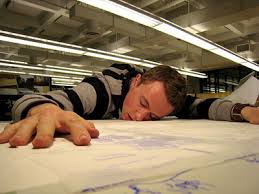 Several hundred people from all over the world gathered in Scottsdale, Arizona this week to discuss the latest findings and methods in dream research. The 35th annual conference of the International Association for the Study of Dreams featured five days of panels, workshops, and artistic events. A lively mix of academic symposium, spiritual retreat, and collective self-experiment, the IASD conference offers a stimulating variety of approaches to the nature and meaning of dreams.
Several hundred people from all over the world gathered in Scottsdale, Arizona this week to discuss the latest findings and methods in dream research. The 35th annual conference of the International Association for the Study of Dreams featured five days of panels, workshops, and artistic events. A lively mix of academic symposium, spiritual retreat, and collective self-experiment, the IASD conference offers a stimulating variety of approaches to the nature and meaning of dreams.
Here are several highlights from the sessions I attended.
Remington Mallet, a doctoral student in cognitive neuroscience at the University of Texas, Austin, described exciting new research on “the ability to communicate in real-time between sleeping and waking.” This theme has been explored in fictional form in various movies and television shows, from “Inception” and “The Matrix” to “Dream Corp. LLC.” Mallet analyzed the sleeping-waking communications portrayed in these popular media in relation to current scientific knowledge about what is and isn’t possible. Mallet concluded that the media portrayals are far ahead of the actual science, but new technologies are moving quickly in the very same directions envisioned by the movies and television shows.
Sharon Pastore and Tzivia Gover of the Institute for Dream Studies gave a moving presentation on the common themes in the dreams of those who care for people with Alzheimer’s and other forms of dementia. Building on research on dreams and bereavement, they described how simple methods of exploring dreams can be helpful for the caregivers, whether professionals, friends, or family members: “Dreamwork can guide decisions in the care and communication with loved ones, as well as coping/healing.” In additional to academic research, Pastore and Gover drew on personal experiences of caring for a parent with dementia to illuminate the value of dreams for the caregiving process.
Robert Stickgold, an associate professor of psychiatry at Harvard Medical School, gave a fascinating keynote address on the role of sleep and dreaming in memory formation. This has been a controversial topic in the field, with some researchers questioning the connection between sleep, dreams, and memory. Stickgold granted that dreams rarely include episodic memories (i.e., direct, unmodified re-playings of a waking event). But he laid out extensive evidence to support the idea that different stages of the sleep cycle are important for memory stabilization. Sleep seems to help people better remember the emotionally relevant aspects of a waking experience. He didn’t talk a lot about dreams, but he did note some studies “demonstrating the explicit incorporation of waking learning experiences into dream content… [S]uch incorporation is accompanied by enhanced sleep-dependent consolidation of the learning task.” In other words, the more people dreamed about the learning task, the better they remembered it the next day. The best part of Stickgold’s address, from my perspective, was his willingness to admit he does not have an easy answer to the “hard question” of how to relate the psychological experience of dreaming with the neurophysiological processes of sleep. It was a refreshing statement of epistemological humility, and quite a contrast to the views of his predecessor at the Harvard lab, J. Allan Hobson, who had no doubt about the right answer to the hard question.
Linda Mastrangelo, a psychotherapist with a private practice in the San Francisco Bay Area, explored in detail a series of her own dreams in which she found unexpected connections with her family heritage, ancestral roots, and places of origin. She combined psychology, myth, art, and sacred geography to trace out a map of her dreaming landscapes. The frequency of certain places in her dreams inspired her to learn more about her own spiritual grounding in special features of the land, and to deepen her awareness of the wisdom traditions and ecological teachings that have grown around these places over the ages. As Mastrangelo made clear, this is a process that anyone can pursue in exploring their own symbolic connections between dreaming and place.
Mark Blagrove, a professor of psychology and director of the sleep laboratory at Swansea University in the UK, proposed a theory of dream function that centered on the evolutionary value of empathy. Drawing on the studies of Raymond Mar and Keith Oatley about fiction and empathy, Blagrove presented evidence in favor of a theory that telling dreams has the effect of eliciting greater empathy towards the dreamer, which strengthens interpersonal bonding and thus enhances reproductive fitness. Blagrove made thought-provoking use of Mar and Oatley’s psychological analyses of fictional literature as a powerful means of simulating social experience and boosting our capacity to understand other people who are different from ourselves—that is, boosting our capacity for empathy. After exploring the connections between empathy and dream-telling, Blagrove passed the microphone to Katja Valli, an assistant professor of cognitive neuroscience at the University of Skvode, Sweden, who agreed beforehand to offer constructive comments on the proposed theory. This was an admirable exercise in scholarly dialogue, and a valuable opportunity for everyone in the audience to observe the kind of critical scrutiny that can help improve our ideas and sharpen our awareness.
Next year’s IASD conference will be held June 21-25 in the Netherlands, at the Rolduc Abbey conference facility in Kerkrade, about 200 kilometers south of Amsterdam. The Abbey is a glorious 12th century structure where the IASD has hosted two previous conferences. I can’t wait!
Note: this post first appeared on June 21, 2018 in Psychology Today.




